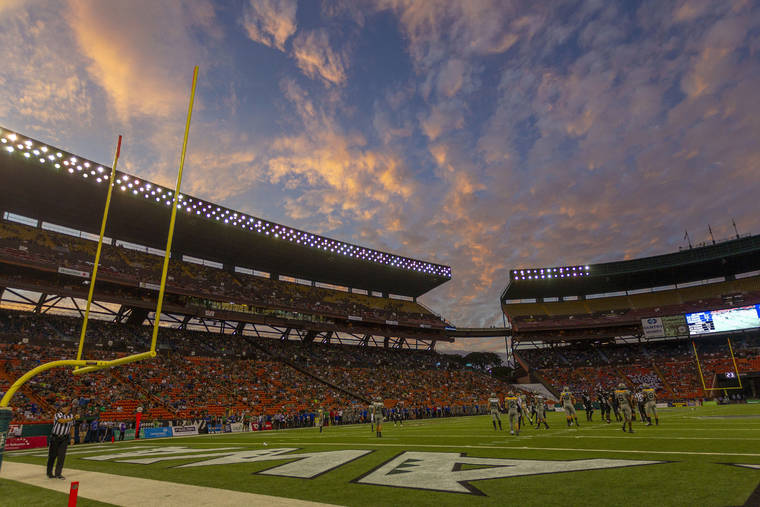The state formally began the solicitation process for the building of the New Aloha Stadium Entertainment District by issuing a request for qualifications from potential partners Friday, a project some lawmakers say will be key for post
“What we still need to remember is that while we are dealing with the health matters during this challenging time of COVID-19, that doesn’t mean projects that have been funded need to stop,” said Rep. Sylvia Luke. “The Aloha Stadium project will be one of the economic drivers for the state, and because of that we need it more than ever before.”
The Legislature last year appropriated up to $350 million in bonds and general funds for the building of the facility.
State Sen. Glenn Wakai said, “The project is important for the economic recovery of Hawaii. I mean, you look at our recent past, TMT is going nowhere, the Nanakuli Wind Farm just got scuttled and the rail project is in neutral. (Aloha Stadium) is the only foreseeable project on the horizon that is going to put a lot of people to work.”
The 61-page RFQ was posted on the state Public Works website from which interested parties can download specifications for their responses.
The RFQ asks potential developers to list their experience and qualifications to partner with the state in building a replacement for the current 45-year-old Aloha Stadium as well as development of the remainder of the 98-acre site the current facility sits on in Halawa for ancillary commercial, retail and residential development.
Respondents are required to list their design and construction, facilities management experience and capabilities and financial capacities.
The stadium portion is projected to open in time for the University of Hawaii’s September 2023 home football season opener.
Interested parties in the public-private partnership — or P3 — have until April 28 to submit their RFQ replies. The state said a five-member special committee will review and vet the responses and select up to three to receive a request for proposal.
RFP respondents will be asked to post a $250,000 “security deposit/bond.”
After the RFP’s are received the state will choose a developer to partner with on the NASED project.
“We’re very pleased with the level of interest we have received from experienced developers and construction industry experts about the (RFQ) document,” Chris Kinimaka, public works administrator for the state Department of Accounting and General Services, said in a statement.
“This bodes well for the NASED project and its prospects for identifying a highly qualified P3 partner. I anticipate we’ll have a strong pool of companies to consider for receipt of the request for proposal (RFP), which is the next step in the process,” Kinimaka’s statement said.



